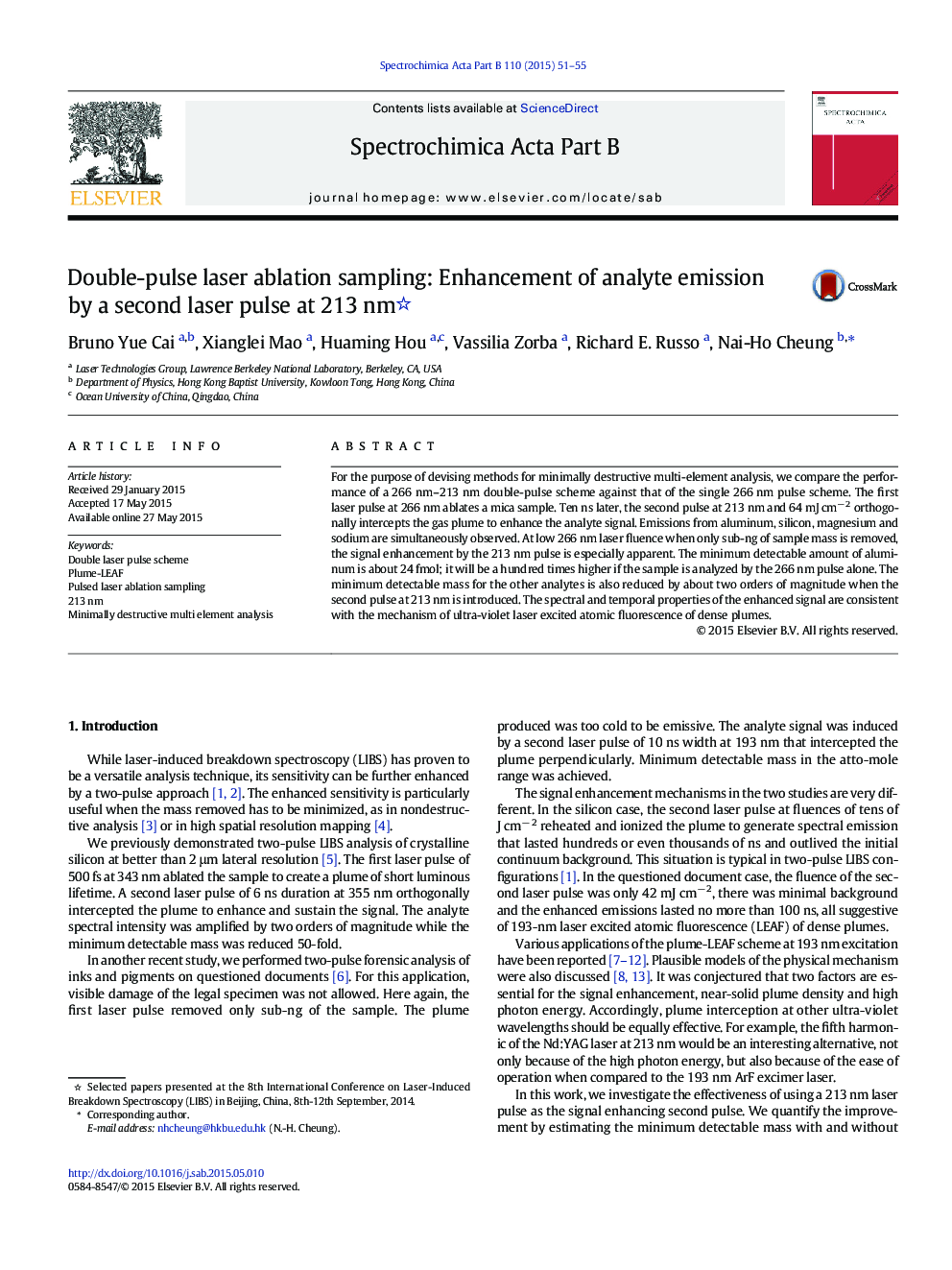| Article ID | Journal | Published Year | Pages | File Type |
|---|---|---|---|---|
| 1239977 | Spectrochimica Acta Part B: Atomic Spectroscopy | 2015 | 5 Pages |
•We devise a two-laser-pulse scheme to analyze the elemental composition of mica as test samples.•We compare the analytical performance of the single 266 nm pulse scheme against the 266 nm – 213 nm two pulse scheme.•The two pulse scheme improves the absolute LODs of the analytes by about a hundred times.•The spectral and temporal properties of the enhanced signal are consistent with the mechanism.
For the purpose of devising methods for minimally destructive multi-element analysis, we compare the performance of a 266 nm–213 nm double-pulse scheme against that of the single 266 nm pulse scheme. The first laser pulse at 266 nm ablates a mica sample. Ten ns later, the second pulse at 213 nm and 64 mJ cm− 2 orthogonally intercepts the gas plume to enhance the analyte signal. Emissions from aluminum, silicon, magnesium and sodium are simultaneously observed. At low 266 nm laser fluence when only sub-ng of sample mass is removed, the signal enhancement by the 213 nm pulse is especially apparent. The minimum detectable amount of aluminum is about 24 fmol; it will be a hundred times higher if the sample is analyzed by the 266 nm pulse alone. The minimum detectable mass for the other analytes is also reduced by about two orders of magnitude when the second pulse at 213 nm is introduced. The spectral and temporal properties of the enhanced signal are consistent with the mechanism of ultra-violet laser excited atomic fluorescence of dense plumes.
